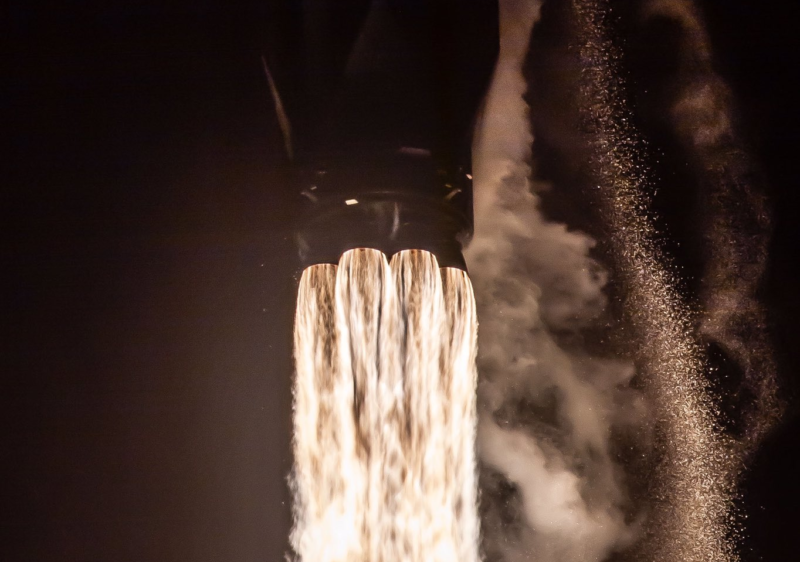
SpaceX
SpaceX is reportedly working with at least one major US defense contractor, Northrop Grumman, on a constellation of spy satellites for the National Reconnaissance Office.
According to Reuters, development of the network of hundreds of spy satellites by SpaceX is being coordinated with multiple contractors to avoid putting too much control of a highly sensitive intelligence program in the hands of one company.
“It is in the government’s interest to not be totally invested in one company run by one person,” one of the news agency’s sources said, most likely referring to SpaceX founder Elon Musk.
Northrop will provide sensors for a subset of the satellites in the constellation—at least 50 of them—and test those spacecraft at its own facility prior to their launch into orbit, Reuters reports.
A proliferated constellation
The news agency first disclosed the existence of SpaceX’s contract with the National Reconnaissance Office, which is responsible for operating US spy satellites, in March. The network is being built by SpaceX’s Starshield business unit under a $1.8 billion contract signed in 2021.
While this network will be separate from SpaceX’s Starlink Internet constellation, the National Reconnaissance Office contract is leveraging SpaceX’s capability to put a large number of Starlink satellites into orbit with its existing manufacturing facilities and the reusable Falcon 9 rocket. The current Starlink megaconstellation has more than 5,700 operational satellites.
This spysat constellation is considered to be “proliferated” because there will be swarms of satellites launched into low-Earth orbit to provide imaging and other capabilities, and these should be less vulnerable to enemy attack because of their large numbers.
Although no nation has ever attacked another nation’s satellites, major space powers, including the United States, Russia, and China, are clearly working on such measures. A good reference for these efforts is the Secure World Foundation’s annual Global Counterspace Capabilities report.
In its reporting, Reuters suggests that the high-quality imaging sensors on the SpaceX satellites in low-Earth orbit will exceed the resolution of some of the best US spy satellites at higher altitudes. They may also provide a superior alternative to the current use of drones and reconnaissance aircraft, which can be risky to fly in the airspace of other nations.
The first elements of this proliferated constellation are likely to launch next month from Vandenberg Space Force Base on the NROL-146 mission. According to Troy Meink, the National Reconnaissance Office’s principal deputy director, this will be the first of as many as six such launches in 2024.
“This launch will be the first launch of an actual operational system,” Meink said at the annual Space Symposium earlier this month. “This system will increase timeliness of access, diversity of communication paths and enhance our resilience.”
An uneasy partnership
Typically, in its 22 years of operation, SpaceX has eschewed deep partnerships with traditional aerospace contractors, including Northrop Grumman. Early on, in fact, SpaceX had a legal confrontation with Northrop over the pintle engine injector technology used in the Merlin rocket engine that powered the Falcon 1, and later Falcon 9 rocket. SpaceX counter-sued, saying Northrop had abused its position in an advisory role in the Air Force to spy on SpaceX. Eventually, the lawsuits were both dropped with no damages.
More than a decade later, SpaceX launched the “Zuma” satellite, an ultra-expensive classified spacecraft valued in excess of $3 billion and built by Northrop for the National Reconnaissance Office. The launch on a Falcon 9 rocket was successful in January 2018, but the spacecraft was subsequently lost. The failure was later blamed on a payload adaptor supplied by Northrop Grumman, although this has never been publicly confirmed.
It is clearly hoped by US government officials that this collaboration between SpaceX and Northrop will meet a happier fate.




















+ There are no comments
Add yours